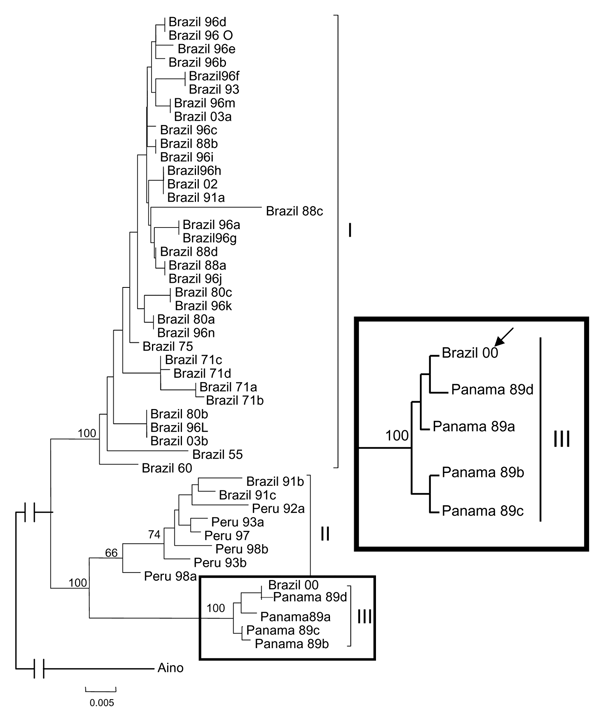Volume 11, Number 10—October 2005
Dispatch
Oropouche Virus Isolation, Southeast Brazil
Figure 2

Figure 2. Phylogeny of Oropouche virus (OROV) strains isolated from different sources and periods by using the neighbor-joining and maximum parsimony methods. Bootstrap values were assigned over each internal branch nodes, and highest values were indicated by continuous arrows showing the presence of at least 3 lineages or genotypes (I, II, and III) of OROV. Bootstrap values for the 3 representative genotype clades are placed over each respective branch node. The black arrow indicates the position of the strain BeAn 626990 (Brazil 00) in the tree. The Aino N gene nucleotide sequence was used as an outgroup to root the tree. The scale bar represents 5% nucleotide sequence divergence.
Page created: February 22, 2012
Page updated: February 22, 2012
Page reviewed: February 22, 2012
The conclusions, findings, and opinions expressed by authors contributing to this journal do not necessarily reflect the official position of the U.S. Department of Health and Human Services, the Public Health Service, the Centers for Disease Control and Prevention, or the authors' affiliated institutions. Use of trade names is for identification only and does not imply endorsement by any of the groups named above.